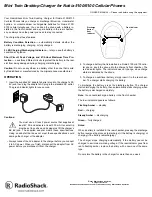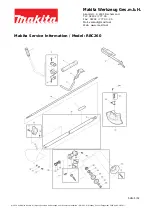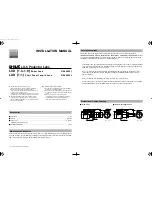
8.2.3. Battery very low terminal voltage
If the battery has been discharged too far, the voltage will fall well below 12V (24V). If the battery has a voltage of less than 10V
(20V) or if one of the battery cells has a cell voltage below 2.5V, the battery will have permanent damage. This will invalidate the
warranty. The lower the battery or cell voltage is, the bigger the damage to the battery will be.
If the voltage has dropped below 8V, the battery will not communicate via Bluetooth anymore. The Bluetooth module is turned off
when the battery terminal voltage drops below 8V or if a cell voltage drops below 2V.
You can try to recover the battery by using the below low voltage recharge procedure. Be aware that this is not a guaranteed
process, recovery might be unsuccessful and there is a realistic chance that the battery has permanent cell damage resulting in a
moderate to severe capacity loss after the battery has been recovered.
Charge procedure for recovery after low voltage event:
This recovery charge procedure is performed on an individual battery. If the system contains multiple batteries, repeat this
procedure for each individual battery.
This process can be risky. A supervisor must be present at all times.
• Set a charger or power supply to 13.8V (27.6V).
• In case any of the cell voltages is below 2.0V, charge the battery with 0.1A until the voltage of the lowest cell increases to 2.5V.
A supervisor must monitor the battery and stop the charger as soon as the battery is getting hot or is bulging. If this is the case
the battery is unrecoverable damaged.
• Once the voltage of the lowest cell has increased above 2.5V, increase the charge current to 0.1C. For a 100Ah battery this is a
charge current of 10A.
• Connect the battery to a BMS and ensure that the BMS has control over the battery charger.
• Make note of the initial battery terminal voltage and battery cell voltages.
• Start the charger.
• The BMS might turn the charger off, then on again for a short time and then off again. This can occur many times over and is
normal behaviour in case there is a significant cell imbalance.
• Make note of the voltages at regular intervals.
• The cell voltages should increase during the first part of the charge process. If the voltage of any of the cells does not increase
in the first half hour, consider the battery as unrecoverable and abort the charge procedure.
• Check the battery temperature at regular intervals. If you see a sharp increase of temperature, consider the battery as
unrecoverable and abort the charge procedure.
• Once the battery has reached 13.8V (27.6) increase the charge voltage to 14.2V (28.4V) and increase the charge current to
0.5C. For a 100Ah battery this is a charge current of 50A.
• The cell voltages will increase more slowly, this is normal during the middle part of the charge process.
• Leave the charger connected for 6 hours.
• Check the cell voltages, they should all be within 0.1V of each other. If one or more cells has a much bigger voltage difference,
consider the battery as damaged.
• Let the battery rest for a few hours.
• Check the voltage of the battery. It should comfortably sit above 12.8V (25.6V) like 13.2V (26.4V) or higher. And the cell
voltages should still be within 0.1V of each other.
• Let the battery rest for 24 hours.
• Measure the voltages again. If the battery voltage is below 12.8V (25.6V) or if there is a noticeable cell imbalance, the battery is
unrecoverable damaged.
8.2.4. Battery is close to end of cycle life or battery has been misused
It is hard to tell what has happened to the battery. But there are a few ways to get around this. You can check the battery settings
in VictronConnect and check if the BMS is functional. You can also check the system voltages and cycle history in case there is a
battery monitor in the system, or if the system is connected to VRM.
Lithium Battery Manual
Page 30
Troubleshooting, support and warranty








































